Kate Lawrence's Blog, page 3
August 10, 2014
Fighting Climate Change with Your Fork
 Keith and I received an e-mail from Micah Parkin, the leader of the Colorado chapter of 350.org, asking for people to submit stories about local action to reduce greenhouse gas emissions. We submitted our story, which has now been published in their blog, and which we reprint below, with hyperlinks added.
Keith and I received an e-mail from Micah Parkin, the leader of the Colorado chapter of 350.org, asking for people to submit stories about local action to reduce greenhouse gas emissions. We submitted our story, which has now been published in their blog, and which we reprint below, with hyperlinks added.
Keith wrote: “My wife and I got solar panels in our backyard, thus generating all of our own electricity, some years ago; and we also massively insulated our house, cutting our heating requirements by nearly 2/3. We also ride our bikes on errands; before we retired, Keith rode the bus and Kate rode her bicycle to work. But the most effective single local action we’ve undertaken to reduce greenhouse gas emissions is to go vegan. According to an article in WorldWatch magazine, over half of all greenhouse gas emissions are due to livestock agriculture (“Livestock and Climate Change,” November/December 2009). We also encourage others to go vegan. We’ve started a local meetup group, “Denver Vegans” (DenverVegans.org), which helps everyone from people who are just interested in cutting back their consumption of animal products to fully committed vegans. This is about as local as you can get — you can fight climate change three times a day just with your fork.”
Sincerely,
Keith Akers & Kate Lawrence
Denver, CO
July 28, 2014
10% Happier
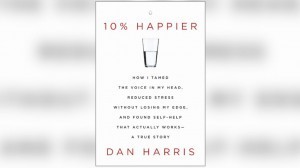 10% Happier: How I Tamed the Voice in My Head, Reduced Stress Without Losing My Edge, and Found Self-Help That Actually Works, by Dan Harris. It Books (Harper Collins), 2014.
10% Happier: How I Tamed the Voice in My Head, Reduced Stress Without Losing My Edge, and Found Self-Help That Actually Works, by Dan Harris. It Books (Harper Collins), 2014.
Here’s an unusual combination: an account of meditation and mindfulness practice combined with anecdotes of famous people, told from the viewpoint of someone who has met and interviewed them. Harris co-anchored Nightline and Good Morning America, was mentored by the likes of Peter Jennings and Diane Sawyer, and has filed stories from exotic places around the world. The two aspects–inward practice and outward celebrity–provide a good balance; I found it irresistible! Regarding mindfulness practice, I have undertaken several silent Buddhist retreats much like the one Harris describes in detail, so I was right there “with” him. (The Japanese Zen sesshin-style retreats I sat are actually even more demanding than the Vipassana retreat Harris chose; for example, having to eat meals while sitting on the floor and engaging in a very structured ceremony of serving, bowing, chanting, and cleaning one’s own dishes.) Stripped of off-putting metaphysics, mindfulness techniques have been used widely and successfully in hospitals and other therapeutic settings.
This practical, useful book delivers on what it promises: to help stressed-out people from all walks of life do what the subtitle says.
June 24, 2014
“Not Money, But Livelihood” — Remembering the Nearings
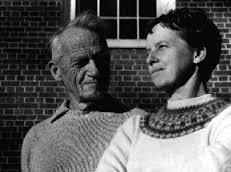 This year marks the 60th anniversary of the publication of a still-amazing book, Living the Good Life, by Scott and Helen Nearing. The Nearings left city life in 1932 to homestead rural land in (first) Vermont and (later) Maine. They felt they had discovered the “good life,” and wrote several books both to describe how they lived and to encourage others toward greater simplicity and authenticity. They have been called “the great-grandparents of the back-to-the-land movement” and no doubt inspired many young people in the 1960s and 1970s. When I came to their books later, I was impressed that they were vegetarians and carried on their farming completely without the use of animals. Would that the 21st century homesteading movement would do likewise!
This year marks the 60th anniversary of the publication of a still-amazing book, Living the Good Life, by Scott and Helen Nearing. The Nearings left city life in 1932 to homestead rural land in (first) Vermont and (later) Maine. They felt they had discovered the “good life,” and wrote several books both to describe how they lived and to encourage others toward greater simplicity and authenticity. They have been called “the great-grandparents of the back-to-the-land movement” and no doubt inspired many young people in the 1960s and 1970s. When I came to their books later, I was impressed that they were vegetarians and carried on their farming completely without the use of animals. Would that the 21st century homesteading movement would do likewise!
The Nearings’ books overflow with sincerity, compassion, and common sense. Here are examples:
“Ideas of ‘making money’ or ‘getting rich’ have given people a perverted view of economic principles. The object of economic effort is not money, but livelihood. Money cannot feed, clothe, or shelter. Money is a medium of exchange,–a means of securing the items that make up livelihood. It is the necessaries and decencies that are important, not the money which may be exchanged for them. And money must be paid for, like anything else . . .”
“‘Civilization,’ said Mark Twain, ‘is a limitless multiplication of unnecessary necessaries.’ A market economy seeks by ballyhoo to bamboozle consumers into buying things they neither need nor want, thus compelling them to sell their labor power as a means of paying for their purchases. Since our aim was liberation from the exploitation accompanying the sale of labor power, we were as wary of market lures as a wise mouse is wary of other traps.”
“We do not eat animals, or their products, and do not exploit them . . . We believe all life is to be respected–non-human as well as human . . . Widespread and unwarranted exploitation of domestic animals includes robbing them of their milk or their eggs as well as harnessing them to labor for man. Domestic animals are slaves . . . Humans have the power of life or death over them . . .”
Scott Nearing died at age 100 in 1983; Helen in 1995. A few years before her death, Helen wrote: “When we are long gone, may the search for the good life go on in the lives of our fellow countrymen and countrywomen, and may our efforts in buildings and books remain for a while to help others along the way.”
Pick up one of their books and find out what they have to say to you today.
June 6, 2014
Flight Behavior
 Flight Behavior, by Barbara Kingsolver. Harper Perennial, 2012.
Flight Behavior, by Barbara Kingsolver. Harper Perennial, 2012.
Kingsolver explores a fictional scenario in which monarch butterflies’ migratory behavior is so disturbed by climate change that they overwinter in Tennessee instead of Mexico. The butterflies turn up en masse in a small town, attracting a prominent scientist and his students to set up a lab and study them, and changing life dramatically for the townspeople. Through her story Kingsolver educates readers about the seriousness of climate change, shows how it disproportionately affects the poor, and unsparingly skewers the media who refuse to tell the truth about it. Trying to make sense of it all are sympathetic characters struggling to make ends meet, navigate their family relationships, and find fulfillment where choices are limited.
Kingsolver has aligned her considerable narrative skill with her passion for the environment to deliver a novel whose thought-provoking issues will continue to engage readers long after the last page is read.
May 28, 2014
Ogallala Road
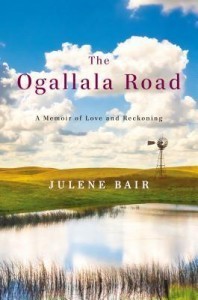 The Ogallala Road; A Memoir of Love and Reckoning, by Julene Bair. Viking, 2014.
The Ogallala Road; A Memoir of Love and Reckoning, by Julene Bair. Viking, 2014.
I was delighted to discover this exceptional memoir about how powerfully our loved ones shape our lives, be those loved ones family members, lovers, or the land we call home. Here the prairie landscapes of western Kansas come alive in exquisite beauty, along with an unsettling concern for the future: the huge Ogallala aquifer beneath them is being pumped out at an alarmingly unsustainable rate to irrigate crops that could never be grown there otherwise. It’s not a case of outside developers coming in to exploit the land’s resources, as happened in Appalachia, for example. On the prairie the long-time residents who love it the most are responsible, whether they fully realize it or not, for robbing their descendants, and many species of indigenous wildlife, of a future there.
As I read I was reminded of another skillful and moving book I loved about the prairie ecosystem: PrairyErth, by William Least Heat-Moon. But Julene Bair has the advantage of having grown up on the land she describes, telling the story as only a native can do. She went away for some years, then returned to the farm with a young son to raise. She develops an environmental awareness that puts her at odds with the locals. Later on, her family must decide what to do with their land after the patriarch dies, his son is ready to retire, and none of the younger generation wants to farm.
Bair combines the sensibility of a poet with an activist’s command of the facts, but neither side runs away with the narrative. The prairie is not just a place on the map to her, but inhabits her mind and heart, allowing her to persuade readers to care more deeply.
May 12, 2014
The Boy Who Harnessed the Wind
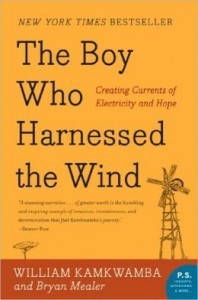 The Boy Who Harnessed the Wind: Creating Currents of Electricity and Hope, by William Kamkwamba and Bryan Mealer. HarperCollins, 2009.
The Boy Who Harnessed the Wind: Creating Currents of Electricity and Hope, by William Kamkwamba and Bryan Mealer. HarperCollins, 2009.
This is the engrossing true story of a bright young boy in Malawi, idled because his family is too poor to pay the required fees to send him to school. He finds old textbooks at the village library that explain how to generate electricity, and with astonishing determination collects the necessary parts. At age 14, he completes a functioning windmill generator. His desire to bring electricity to his family and village persists despite much discouragement, lack of resources, and taunting by friends and relatives who think he’s crazy. If this weren’t enough, the country endures a terrible famine at that time (2002), due to government corruption as much as lack of rain. William’s account of the famine as someone who experienced it is more moving than any account by outsiders could ever be.
Finally his talent is recognized, and he is invited to give a TED talk when he can barely speak English. By the time the book was published in 2009, he was a student at Dartmouth.
This book is for anyone looking for an inspirational story of what can be achieved with persistence and dedication, even without support. It also shows the transformative power of a local public library. My book club loved it.
May 3, 2014
50PlusPrime Interview and Other Earth Day Encounters
 While tabling on behalf of Denver Vegans at the city of Denver’s Earth Day Fair, I had several chances to increase the effectiveness of my outreach by talking with people who influence many others. A friend had told me that 50PlusPrime, the TV News Magazine for Baby Boomers, was in town looking for stories on boomer generation people involved in community service, and would I be interested in talking to them? I would.
While tabling on behalf of Denver Vegans at the city of Denver’s Earth Day Fair, I had several chances to increase the effectiveness of my outreach by talking with people who influence many others. A friend had told me that 50PlusPrime, the TV News Magazine for Baby Boomers, was in town looking for stories on boomer generation people involved in community service, and would I be interested in talking to them? I would.
It turned out that the program’s president and founder is a vegan himself! So he was glad to film a segment on that topic. He and a cameraman came to the Earth Day Fair, interviewed me on camera and showed our vegan literature table. The program will not air until this fall, in limited markets, but will be available for viewing online after air date.
I also mentioned that I would like to encourage boomer-age viewers not to give up on personal goals or dreams they’d had in their youth, out of a fear that maybe now they were too old to achieve them. I’d wanted to be a published author since my youth, but put that on the back burner as I gave my attention to other worthwhile projects. I picked up that dream in my late 50s, and wrote my book The Practical Peacemaker: How Simple Living Makes Peace Possible. It was picked up by New York publisher Lantern Books, published just after my 60th birthday, and launched with an author event at the Tattered Cover Bookstore. I was filmed talking about this for a separate segment of 50PlusPrime.
But back to the Earth Day Fair. Denver Water had been assigned the table next to ours. They were giving out water-saving sprinkler nozzles and promoting low-flow shower heads. In a quiet moment I asked a staffer if she was aware of how much water is saved by each person who reduces or eliminates meat consumption. I gave her the PETA pamphlet “Meat’s Not Green,” pointing out the statistic that “by going vegan, one person can save approximately 200,000 gallons of water a year.” She listened to what I was saying, and seemed surprised, so maybe she will think this over.
Another influential encounter was with the head of the Denver Dept. of Environmental Health, which sponsored the Fair. He said his father (aged 82!) had been encouraging him to go veg, and he himself was cutting back on meat. Then he commented that his department had been encouraging local food and the support of local farmers. Tabling with me was Keith Akers, who explained to him that only 10% of the energy in our food comes from transportation; most is in the production of the food, and animal products require many times more energy than plant foods to produce. Again, we hope he will think this over.
We talked to activists staffing tables for other environmentally-oriented organizations and many Fair attendees, with mostly positive–and some downright enthusiastic–results.
April 16, 2014
A Delightful Visit to Danzig’s Roost
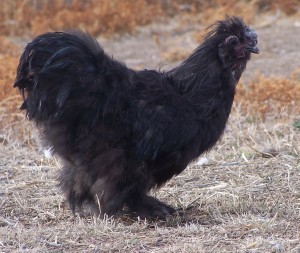 Last weekend I had the pleasure of visiting an animal sanctuary devoted mostly to chickens. The Rooster Sanctuary at Danzig’s Roost is located near Bennett, Colorado, and houses around 50 roosters and over 100 hens, plus eight ducks, four inquisitive goats, two gentle horses, and an unforgettable potbellied pig. Not to mention countless wild rabbits who burrow under the coops. The goats definitely wanted to engage with us; one kept trying to untie my shoelaces! The horses came over to the fence to greet us, and were rewarded by the treats we gave them. The hens scurried around us, making soothing hen sounds. Among the hens and roosters, we saw a variety of breeds of varying sizes, some with stunning coloration, feathered feet, or other unusual features. We were impressed with the grounds, the numerous sturdy coops and fenced enclosures, a nice pond for the ducks, and plenty of space to explore.
Last weekend I had the pleasure of visiting an animal sanctuary devoted mostly to chickens. The Rooster Sanctuary at Danzig’s Roost is located near Bennett, Colorado, and houses around 50 roosters and over 100 hens, plus eight ducks, four inquisitive goats, two gentle horses, and an unforgettable potbellied pig. Not to mention countless wild rabbits who burrow under the coops. The goats definitely wanted to engage with us; one kept trying to untie my shoelaces! The horses came over to the fence to greet us, and were rewarded by the treats we gave them. The hens scurried around us, making soothing hen sounds. Among the hens and roosters, we saw a variety of breeds of varying sizes, some with stunning coloration, feathered feet, or other unusual features. We were impressed with the grounds, the numerous sturdy coops and fenced enclosures, a nice pond for the ducks, and plenty of space to explore.
Owner Jewel was very generous with her time in showing our group around and answering our questions. She has a full-time job requiring a 45-minute (one-way) commute, in addition to caring–along with partner Jason–for all these animals. Jewel and Jason are vegans, and help to educate the public about the value of chickens, and the many reasons for not eating them or their eggs.
If you live along the Front Range, consider visiting Danzig’s, or in any case, donating to help with the care and housing of these deserving rescued animals. Info about contacting Danzig’s and making a donation can be found here.
April 8, 2014
The Childless Choice in America: New Data
Population Connection reports (scroll to page 9 of the magazine at this link) that 15% of all American women ages 40-44 don’t have biological children. Most of these women are single. Among married American women in the same age group, those who have no biological or adopted children or stepchildren reached 6 % during 2006-2010, up from 4.5 % in 1988. According to the report, polls have shown that couples and individuals are placing less emphasis on the necessity of child rearing for their happiness and personal fulfillment. Because of our excessive consumption, an American child makes a much greater demand on the earth’s resources than a child born in most other countries; for example, compared to a child born in India, an American child will consume on average a whopping 30 times more resources.
On a dangerously warming planet where resources are limited but population keeps growing, any increase in the numbers of the childless is a hopeful sign. Fortunately the rate of American population growth has been declining. But unfortunately for the future of everyone on earth, a recent Gallup poll found that 90% of Americans either have children already or want to have them in the future. We need to think of creative and non-offensive ways to educate and engage our fellow citizens on this critically important topic, so that the 90% number will decrease. Numerous internet resources offer ideas–and videos–you can use to start discussions, such as the archive of articles .
April 1, 2014
A Missing Viewpoint about Antibiotics on Factory Farms
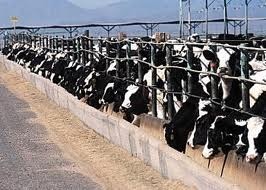 The following is a letter I sent to three organizations–Food & Water Watch, Natural Grocers, and Colorado Interfaith Power & Light–who are sponsoring a forum in Denver this week on the overuse of antibiotics on factory farms. Working to change laws on this is fine as far as it goes, but the best solution doesn’t require legal or corporate change: we need to encourage people to reduce or eliminate their use of animal products. That viewpoint will not be represented on the forum, although grassfed beef and dairy interests will be. I call on the sponsors to include the veg viewpoint in any future events on this topic.
The following is a letter I sent to three organizations–Food & Water Watch, Natural Grocers, and Colorado Interfaith Power & Light–who are sponsoring a forum in Denver this week on the overuse of antibiotics on factory farms. Working to change laws on this is fine as far as it goes, but the best solution doesn’t require legal or corporate change: we need to encourage people to reduce or eliminate their use of animal products. That viewpoint will not be represented on the forum, although grassfed beef and dairy interests will be. I call on the sponsors to include the veg viewpoint in any future events on this topic.
To Lisa Trope, Food & Water Watch; Alan Lewis, Natural Grocers; and Colorado Interfaith Power & Light:
I just picked up a flyer at Natural Grocers about the potluck and forum you are sponsoring April 2 regarding antibiotic-resistant bacteria. I know that Food & Water Watch has a petition campaign urging passage of the Preventing Antibiotic Resistance Act, related to factory farms, where routinely-given antibiotics endanger the health of everyone. I applaud this campaign.
However, regarding the April 2 event, there is a glaring omission among those invited to be on the panel. No one is speaking to the approach that is simple, effective, and would greatly benefit human health, the animals, and the environment: namely, encourage people to reduce or eliminate their consumption of meat and other animal products. This requires no petitions, no changes in laws or corporate agricultural practices. Unlike the approach of the non-factory farmed meat producers, this would benefit the environment (e.g. grassfed cattle emit more methane, a dangerous greenhouse gas, than feedlot-finished cattle, because grassfed animals must live longer in order to reach market weight). The meat-reduction solution also benefits human health because only animal products have cholesterol; they also contain saturated fat and no fiber. This solution also addresses the cruel practice of animal slaughter, which occurs at a time far short of the animals’ normal lifespan.
In planning future events addressing the use of antibiotics on factory farms, you owe it to your audience to allow all viewpoints to be heard, especially that of the vegetarian/vegan/animal welfare community which–unlike the animal producers–makes no profit if people follow our suggestions. Particularly Natural Grocers, which has many vegetarian and vegan customers (I spend over $400 a month there), should see that this viewpoint is represented.
We at Denver Vegans stand ready to provide a speaker/panelist upon request.
Thank you,
Kate Lawrence,
Co-organizer, Denver Vegans



